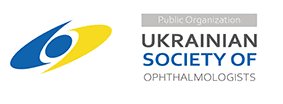Clinical experience of the use of Vasavital® in dry age-related macular degeneration and ischemic optic neuropathy
DOI:
https://doi.org/10.31288/oftalmolzh202113845Keywords:
Vasavital, dry age-related macular degeneration, ischemic optic neuropathyAbstract
Background: The chronic ischemic process caused by impaired hemodynamics in the eye and brain is a component of the pathogenesis of ischemic optic neuropathy and age-related macular degeneration, and requires prompt and adequate treatment.
Purpose: To examine the effect of a one-month course of Vasavital on the function of the visual system and regional hemodynamics in patients with dry age-related macular degeneration and those with ischemic optic neuropathy.
Material and Methods: Thirty-two patients with dry age-related macular degeneration (AMD) (mean age, 66 ± 1.5 years) and 22 patients with chronic ischemic optic neuropathy (mean age, 57.0 ± 1.4 years) underwent examination and treatment at the Department of Uveitis and Laboratory for Functional Examination of the Visual System of the Filatov institute. They received a one-month course of Vasavital-only therapy at a dose of one capsule twice a day as an outpatient treatment. Patients reported their complaints and underwent routine eye examination, studies of regional hemodynamics in the eye and brain (by ophthalmic rheography and rheoencephalography with Reocom, the computerized rheography apparatus), and electrophysiological studies of electrically evoked phosphene threshold (EEPT) and critical frequency of phosphene disappearance (CFPD) at two time points: prior to and after a one-month course of Vasavital-only therapy.
Results: A one-month course of Vasavital-only therapy resulted in 24% and 9.6%-25% increases in ocular pulse blood filling in patients with chronic ischemic optic neuropathy and patients with age-related macular degeneration with various baseline levels of visual acuity, respectively. In addition, vascular tone in large-and small-caliber ocular vessels decreased significantly, by 12-17%, in patients with chronic ischemic optic neuropathy, and by 10-20%, in patients with age-related macular degeneration, and vascular tone in large-caliber brain vessels (in the vertebral-basilar system) decreased by 21.6% in patients with ischemic optic neuropathy. A course of Vasavital-only therapy resulted in improved optic nerve function in patients with ischemic optic neuropathy, with a 20.5% improvement in electrically evoked phosphene threshold (EEPT), and 22-63% improvement in critical frequency of phosphene disappearance (CFPD); this indicated an improved function of the peripheral as well as central retina.
References
1.Supuran CT. Agents for the prevention and treatment of age-related macular degeneration and macular edema: a literature and patent review. Expert OpinTher Pat. 2019;24:1-7. https://doi.org/10.1080/13543776.2019.1671353
2.Holekamp NM. Review of neovascular age-related macular degeneration treatment options. Am J Manag Care. 2019;25(10 Suppl):S172-S181.
3.Gorusupudi A, Nelson K, Bernstein PS. The Age-Related Eye Disease 2 Study: Micronutrients in the treatment of macular degeneration. Adv Nutr. 2017;8:40-53.https://doi.org/10.3945/an.116.013177
4.Khoo HE, Ng HS, Yap WS, et al. Nutrients for Prevention of Macular Degeneration and Eye-Related Diseases. Antioxidants (Basel). 2019;8(4).pii:E85.https://doi.org/10.3390/antiox8040085
5.Bourne RR, Jonas JB, Bron AM, et al. Prevalence and causes of vision loss in high-income countries and in Eastern and Central Europe in 2015: Magnitude, temporal trends and projections. Br J Ophthalmol. 2018;102:575-585.https://doi.org/10.1136/bjophthalmol-2017-311258
6.Pawlowska E, Szczepanska J, Koskela A, et al. Dietary Polyphenols in Age-Related Macular Degeneration: Protection against Oxidative Stress and Beyond. Oxid Med Cell Longev. 2019;2019:9682318.https://doi.org/10.1155/2019/9682318
7.Roberts JE, Dennison J. The Photobiology of Lutein and Zeaxanthin in the Eye. J Ophthalmol. 2015;2015:687173.https://doi.org/10.1155/2015/687173
8.Martínez-Solís I, Acero N, Bosch-Morell F, et al. Neuroprotective Potential of Ginkgo biloba in Retinal Diseases. Planta Med. 2019 Jul 2.https://doi.org/10.1055/a-0947-5712
9.Evans JR, Lawrenson JG. Antioxidant vitamin and mineral supplements for slowing the progression of age-related macular degeneration. Cochrane Database Syst Rev. 2017;7:CD000254.https://doi.org/10.1002/14651858.CD000253.pub4
10.Murillo AG, Hu S, Fernandez ML. Zeaxanthin: Metabolism, Properties, and Antioxidant Protection of Eyes, Heart, Liver, and Skin. Antioxidants (Basel). 2019;8(9).pii:E390.https://doi.org/10.3390/antiox8090390
11.Eisenhauer B, Natoli S, Liew G, Flood VM. Lutein and Zeaxanthin-Food Sources, Bioavailability and Dietary Variety in Age-Related Macular Degeneration Protection. Nutrients. 2017;9(2).pii:E120.https://doi.org/10.3390/nu9020120
12.Coscas G, Cunha-vaz J, Loewenstein A, Soubrane G. Macular edema: a practical approach. Basel, Switzerland: Karger; 2010:1-9. Developments in Ophthalmology; vol 47.https://doi.org/10.1159/000320070
13.Díaz-Coránguez M, Ramos C, Antonetti DA. The inner blood-retinal barrier: Cellular basis and development. Vision Res. 2017;139:123-37.https://doi.org/10.1016/j.visres.2017.05.009
14.Lawler T, Liu Y, Christensen K, et al. Dietary Antioxidants, Macular Pigment, and Glaucomatous Neurodegeneration: A Review of the Evidence.Nutrients. 2019;11(5).pii:E1002.https://doi.org/10.3390/nu11051002
15.Miller JW. Developing Therapies for Age-related Macular Degeneration: The Art and Science of Problem-solving: The 2018 Charles L. Schepens, MD, Lecture. Ophthalmol Retina. 2019;3(10):900-9.https://doi.org/10.1016/j.oret.2019.07.015
16.Chew EY, Clemons TE, Sangiovanni JP, et al. Secondary analyses of the effects of lutein/zeaxanthin on age-related macular degeneration progression: AREDS2 report No. 3. JAMA Ophthalmol. 2014;132(2):142-9.https://doi.org/10.1001/jamaophthalmol.2013.7376
17.Denisova IP. [On the role of ischemic and involutionary factors in the pathogenesis of ocular degenerative disorders]. In: [Fedorov memorial lectures- 2014]. Moscow;2014. p.128-204. Russian.
18.Frolov MA, Alkam KM. [Manifestation of ocular ischemic syndrome in patients with atherosclerotic carotid artery stenosis]. In: [Proceedings of the East-West-2013 Conference]. Ufa;2013. p.279.
19.Moisseiev E, Loewenstein A. Drug Delivery to the Posterior Segment of the Eye. Dev Ophthalmol. 2017;58:87-101.https://doi.org/10.1159/000455276
20.Occhiutto ML, Freitas FR, Maranhao RC, Costa VP. Breakdown of the Blood-Ocular Barrier as a Strategy for the Systemic Use of Nanosystems. Pharmaceutics. 2012;4(2):252-5.https://doi.org/10.3390/pharmaceutics4020252
21.Ponomarchuk VS. [Diagnostics using electrical phosphenes in ophthalmology]. Odesa: Astroprint; 2018. Russian.
22.Montes P, Ruiz-Sánchez E, Rojas C, RojasP. Ginkgo biloba extract 761: a review of basic studies and potential clinical use in psychiatric disorders. CNS Neurol Disord DrugTargets. 2015;14:132-49.https://doi.org/10.2174/1871527314666150202151440
23.Yin B, Xu Y, Wei R, LuoB. Ginkgo biloba on focal cerebral ischemia: a systematic review and meta-analysis. Am J Chin Med. 2014; 42(4):769-83.https://doi.org/10.1142/S0192415X14500499
24.Cybulska-Heinrich AK, Mozaffarieh M, Flammer J. Ginkgo biloba: an adjuvant therapy for progressive normal and high-tension glaucoma. Mol Vis. 2012; 18: 390-402.
25.Spadiene A, Savickiene N, Jurgeviciene N, Zalinkevicius R, Norkus A, Ostrauskas R, Skesters A, Silova A, Rodovicius H, Francaite-Daugeliene M. Effect of ginkgo extract on eye microcirculation in patients with diabetes. Cent Eur J Med. 2013; 8: 736-41.https://doi.org/10.2478/s11536-012-0146-1
26.Park JW, Kwon HJ, Chung WS, Kim CY, Seong GJ. Short-term effects of Ginkgo biloba extract von peripapillary retinal blood flow in normal-tension glaucoma. Korean J Ophthalmol. 2011; 25: 323-8.https://doi.org/10.3341/kjo.2011.25.5.323
27.Chung HS, Harris A, Kristinsson JK, Ciulla TA, Kagemann C, Ritch R. Ginkgo biloba extract increases ocular blood flow velocity. J Ocul Pharmacol Ther. 1999 Jun;15(3):233-40.https://doi.org/10.1089/jop.1999.15.233
28.Khramenko NI, Konovalova NV, Guzun OV. Regional and central hemodynamics in ischemic optic neuropathy. J Ophthalmol (Ukraine). 2018;3:3-9.
Downloads
Published
How to Cite
Issue
Section
License
Copyright (c) 2025 В. С. Пономарчук, Н. В. Коновалова, Н. І. Храменко

This work is licensed under a Creative Commons Attribution 4.0 International License.
This work is licensed under a Creative Commons Attribution 4.0 International (CC BY 4.0) that allows users to read, download, copy, distribute, print, search, or link to the full texts of the articles, or use them for any other lawful purpose, without asking prior permission from the publisher or the author as long as they cite the source.
COPYRIGHT NOTICE
Authors who publish in this journal agree to the following terms:
- Authors hold copyright immediately after publication of their works and retain publishing rights without any restrictions.
- The copyright commencement date complies the publication date of the issue, where the article is included in.
DEPOSIT POLICY
- Authors are permitted and encouraged to post their work online (e.g., in institutional repositories or on their website) during the editorial process, as it can lead to productive exchanges, as well as earlier and greater citation of published work.
- Authors are able to enter into separate, additional contractual arrangements for the non-exclusive distribution of the journal's published version of the work with an acknowledgement of its initial publication in this journal.
- Post-print (post-refereeing manuscript version) and publisher's PDF-version self-archiving is allowed.
- Archiving the pre-print (pre-refereeing manuscript version) not allowed.












